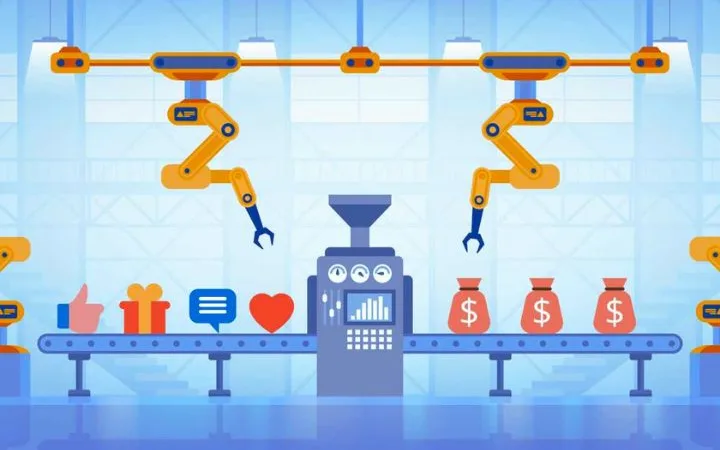Top Benefits Of Performing Continuous Testing

You must consider moving one step further by developing a continuous testing paradigm if you have already utilized or are thinking of test automation as a component of your software development life cycle. Continuous testing has several advantages, and this blog post will highlight most of them. So, without any further ado, let’s get started!
The need to provide cutting-edge digital experiences in every software and product release is crucial as the market becomes more competitive. Organizations are doing all in their power to get their items to the market before their rivals in order to stay competitive. Development and testing cycles are being compressed due to this urgency. In order to expedite releases while maintaining quality, delivery teams must innovate and improve their development and testing methodologies via the implementation of next-generation test automation and continuous testing techniques.
But for the time being, let’s quickly go through the main advantages of continuous testing that you should keep in mind as you choose if continuous testing is the best option for your organization. But first, let’s get back to the basics.
Table of Contents
Explaining Continuous Testing
Software testing of this kind involves continuous testing of the product throughout the full Continuous Delivery (CD) process. Automated tests are used in continuous testing to make sure teams get feedback right away and fast reduce as many risks as they can throughout the software development lifecycle. Members of the team may also continually learn about their product and how to improve its quality and dependability. It is difficult to implement continuous testing into your organization, however, since you must develop a test plan to guarantee a seamless transition.
Consider this: Software is often only tested after the code has been produced and handed to the quality assurance division for independent testing. The code is then submitted back to the developers for correction if flaws are discovered. This testing strategy is most useful. However, it is time-consuming, dangerous, and disruptive. Nowadays, firms instead want quick delivery of high-quality goods. What if testing could be done in a different way? A quicker and more effective method that prevented bottlenecks between several departments? Continuous testing is useful in this situation.
Before any new code is developed, bugs/errors/flaws may be found by testing code immediately after it has been submitted to the repository. Then, the additional code wouldn’t need to be modified to include bug fixes. Talks about time-saving, isn’t it?
Reasons For An Organization’s Adoption Of Continuous Testing
The testing business has been experiencing rapid transformation as a result of customers seeking quicker development times and delivery timelines that are so constrained that software testing ends up being a very challenging undertaking. The greatest practice for meeting quality requirements and reducing business risks is continuous testing. Here are some other factors:
- Application architectures incorporate a number of protocols and technologies in a single functional process, making them multi-layered, distributed, and sophisticated.
- Any organization must prioritize the user experience. A little error might cost you a client to a rival. The UX/UI design approach is quite flexible. Therefore, the largest issue for the testing process is striking the correct balance between design needs and user experiences.
- Agile and DevOps have assumed a leading role in the software delivery strategy, increasing the frequency of product releases to the market. Release schedules are becoming shorter and are different for every company. reducing the amount of time needed for test creation and maintenance while lowering the effectiveness of test execution.
Benefits of Continuous Testing
Now, let’s come to the benefits that continuous testing offers:
- Testing throughout the entire pipeline: Continuous testing is basically an adapted form of testing that is done all along the pipeline. In other words, you won’t need to wait for the first round of work to end before testing and calling it a day. Instead, testing may take place at each and every step of the process. Developers will have to evaluate the tests nearly immediately after they are created. They are not required to publish a complete build for submission until the testing procedure is finished. All functioning code contributions have the ability to pass the test script. The code is then checked once again after every division and addition. Testing won’t likely end here.
After releasing alpha and beta versions in pre-production settings, live or online product testing will take place throughout development. Additionally, testing will continue even after the official release goes online. Since problems might occur at any point along the pipeline, testing at all essential locations will aid in identifying issues early, before they have a chance to become worse.
Continuous testing comes to mind if you are acquainted with agile approach. Software testing was done using the agile methodology as opposed to the outdated waterfall technique, which only allowed for testing to take place at particular stages and times. Another name for this is shift-left testing.
- Improves Organizational Response to Market Changes: Automated testing and deployment speeds up release cycles. Updates are created more quickly and published more often using continuous testing and test automation. Code that has been produced, whether old or new, is extensively and continuously tested with the use of automated testing. It emphasizes swift mistake correction to guarantee clean code delivery, which permits integrations and expedited application deployment on a regular basis with speed.
- Early input to stakeholders: Implementing continuous testing in the SDLC provides early notification of any difficulties the code may create with current features to the development team. At every level of development, continuous testing offers regular, useful feedback, which enables software products to be released faster and with fewer faults. This early input aids in a quicker time to market and the analysis of business risk coverage.
- Early risk/bugs detection: By identifying potential risks early, technological testing increases risk management. By moving testing to the left, developers and testers may work together much earlier in the development cycle. It enables the test to learn about design and development from the very beginning. Additionally, it may work directly with programmers to improve their testing tools and techniques.
Developers may run unit tests individually if the shift left happens early in agile teams. At the very beginning of the product’s first conception, money is invested to include additional product solutions to issues like catastrophe recovery. Given that, at first glance, some development teams may think there are too many cooks in the kitchen. However, if effort is made to foster a genuinely collaborative climate amongst teams, free of conflict from internal rivalry, the rewards come in spades. Such a fear shouldn’t be without merit.
Continuous testing will enable all parties to minimize hazards prior to their introduction thanks to the effectiveness of the amazing teams working together from the start. Additionally, it will reveal the potentially harmful faults before they have a chance to get more sophisticated, as they will unavoidably do later on in the development process.
- Increases Test Coverage: Due to the fact that continuous testing starts at the early stages of implementing freshly written code, it evaluates all features and possible flaws. Testers and developers may rest easy knowing that any significant flaws in the application will be found early on, before integration, with the appropriate use of continuous testing.
- Reduces Cost of Defects: Continuous testing is essential in ensuring outputs are free of errors. Errors are supposed to happen when code is changed. When dealing with locating and removing these mistakes early in the development lifecycle, continuous testing enables a quicker turnaround time. As a result, fixing problems costs less money overall. When a change is discovered early in the development cycle, the cost of change is often lower. Continuous testing is really helpful in this regard.
- Simple to implement: Nearly all companies thinking about continuous testing have reservations in this area. You may relax knowing that integrating continuous testing procedures into the current CI/CD pipeline is simple and doesn’t call for any additional technologies. If an organization doesn’t already have a CI/CD implementation, they should think about implementing one right away to get measurable advantages. Create a DevOps approach first, keeping continuous testing in mind.
- Examines the testing procedure: Over time, testing a variety of tests continuously yields valuable measures, about which only one might regularly estimate the testing process itself. By approaching it in this manner, you can see how adding additional test procedures to your pipeline from the beginning through the release and beyond will result in more data. You will be able to get information regarding how the test procedures are functioning, which is advantageous for you. In an agile setting, it is crucial because you cannot adopt a hands-off strategy in which outdated batch testing procedures and test suites become more complicated.
Maintaining such procedures over time will undoubtedly entail more effort than just running the tests themselves due to recurrent usage and change needs. Constant testing requires continuous feedback, which should include evaluations of the test suite’s performance after each application.
A continuous testing CPA will identify search capabilities very rapidly. Speed and responsiveness are the two key components of continuous testing for any agile approach. If everyone engaged is paying attention, a bottleneck will become apparent quickly. You can continually improve your testing strategy with both this and continuous testing.
- Instantaneous feedback: Feedback is given at each step, just as testing takes place at each level. It will save time if input is obtained early in the development process and at each step that follows. At the risk of rehashing an old point, issues may be fixed more quickly and simply the sooner you identify them. This step’s automation component is extremely useful. Imagine a situation where the test runs automatically and provides findings as soon as a developer pushes an update to the code repository.
Significant Continuous Testing Elements
Let’s dissect the essential elements of continuous testing to see whether your company will benefit from it.
- Automated Testing: Manual testing is time- and labor-consuming. Your developers will have more time to work on fixing the faults discovered during testing thanks to automation. Nevertheless, not everything has to be mechanized. Exploratory testing is essential for coming up with innovative test methods. What about those test cases discovered via exploratory testing? Streamline them!
Test automation is necessary for continuous testing. The speedy input the team gets from test automation is its finest feature. Continuous testing enables early and frequent feedback, allowing modifications to be made long before improvements are made available to the public. Do you see the relationship? The ideal scenario for continuous testing is for it to be initiated and carried out automatically. The ultimate objective of continuous integration and delivery is this.
Various automated testing tools are available to automated your web testing like Selenium, Cypress, Playwright etc. However, among these Selenium is used widely by devs and testers.
Want to know more about Selenium? Check this detailed Selenium tutorial.
- Continuous Integration: Continuous testing is not possible without the CI/CD workflow. Let’s discuss continuous integration (CI). In this procedure, developers who are working on a single project collect their code and store it in a code repository. Adding code from several developers to one project might result in numerous issues. Continuous testing is useful in this situation. You may detect flaws as early as possible and repair them more quickly by automating the test runs each time new code is incorporated. You can save a lot of time, money, and effort by identifying defects before they are put into production.
- Continuous Delivery: Continuous Delivery (CD) and continuous deployment are often mistaken terms. Continuous delivery is a wonderful approach to think about the differences since it means that any code version is always prepared for production deployment. You must focus on tiny, regular modifications for both methods. However, we think that continuous testing and continuous delivery go hand in hand since you should test code before it is delivered. It is a waste of resources to have code ready to use without adequately testing it, thus this should be addressed right now. Keep testing your code!
Summary!
Continuous testing involves regularly assessing how well software is functioning and automating the process to keep it operating as smoothly and efficiently as feasible. Early, frequent, and continuous testing are required at all stages of the software development process. This method makes it simpler to resolve minor problems before they escalate into much bigger ones by helping to spot any possible difficulties that may be forming. This will aid in minimizing any bugs or flaws and problems that may otherwise adversely affect your company’s day-to-day operations or the general user experience.
For organizations, continuous testing is now a need for the software development and delivery process, not a choice. Organizations in the modern day must take advantage of continuous testing, and having the correct software is crucial.
With the help of LambdaTest’s test execution platform, customers can test online and mobile applications using more than 3000 different browsers, browser versions, and operating systems. LambdaTest serves the test execution requirements of more than 600,000 users and over 500 businesses spread across more than 130 countries.






